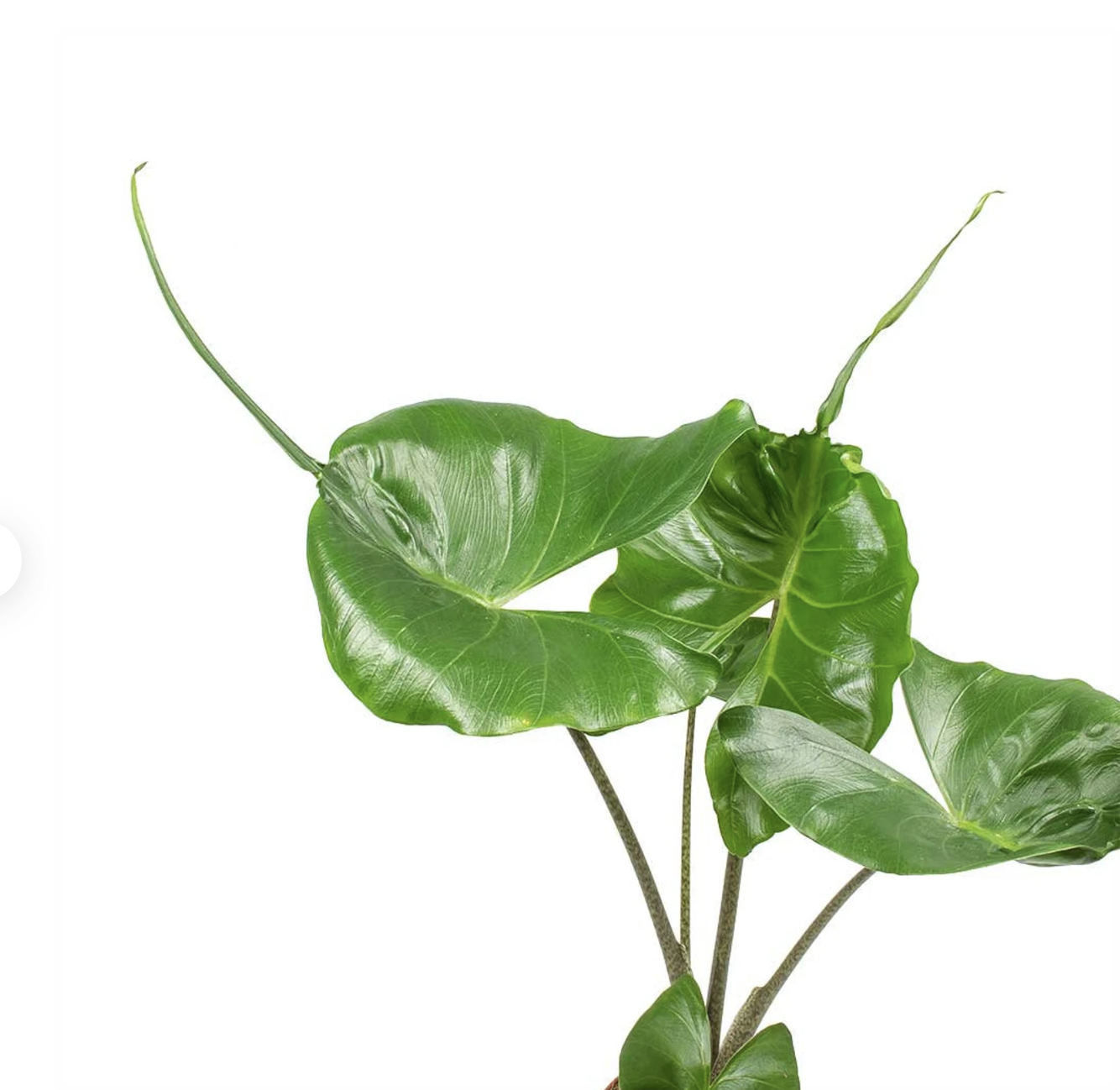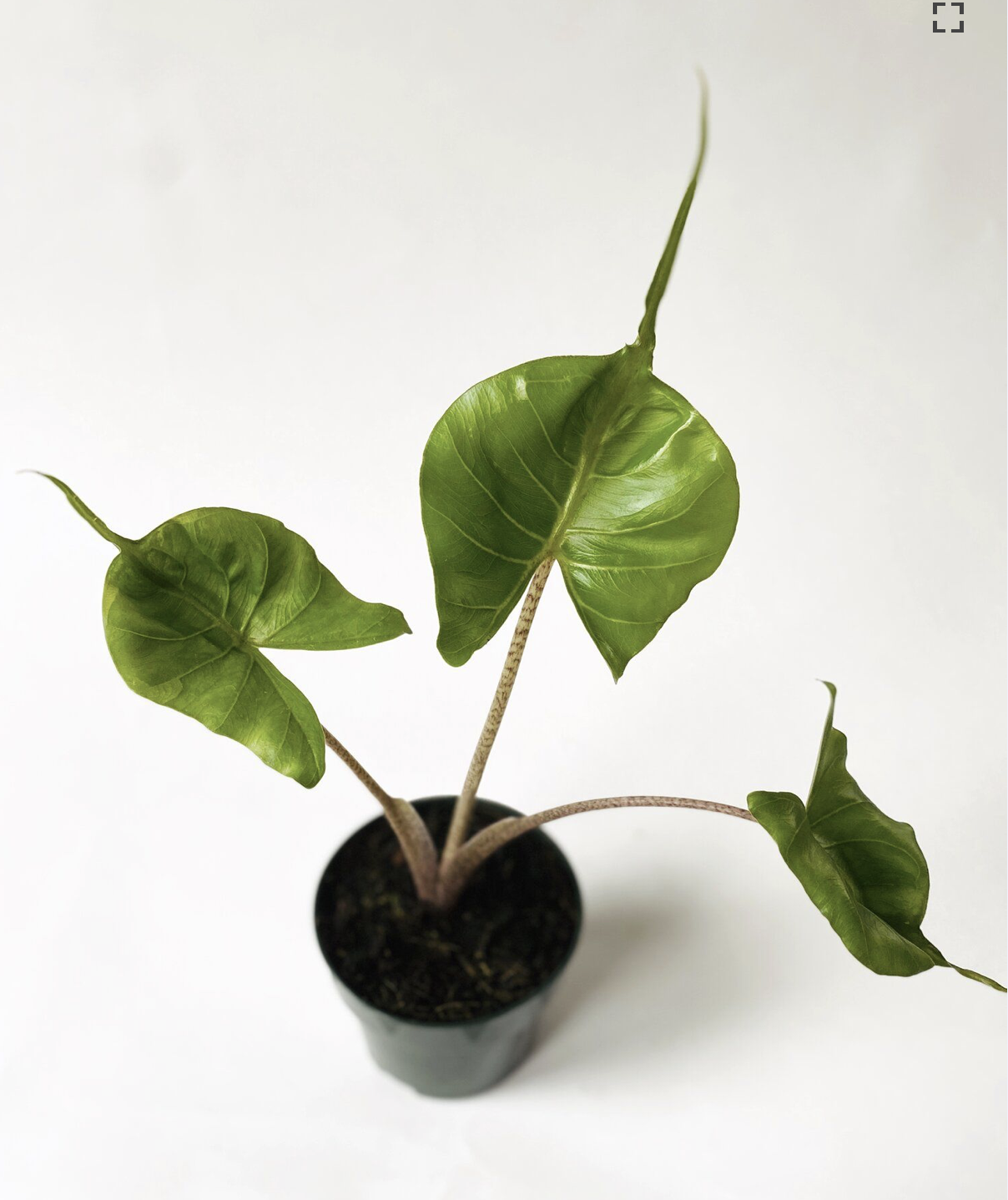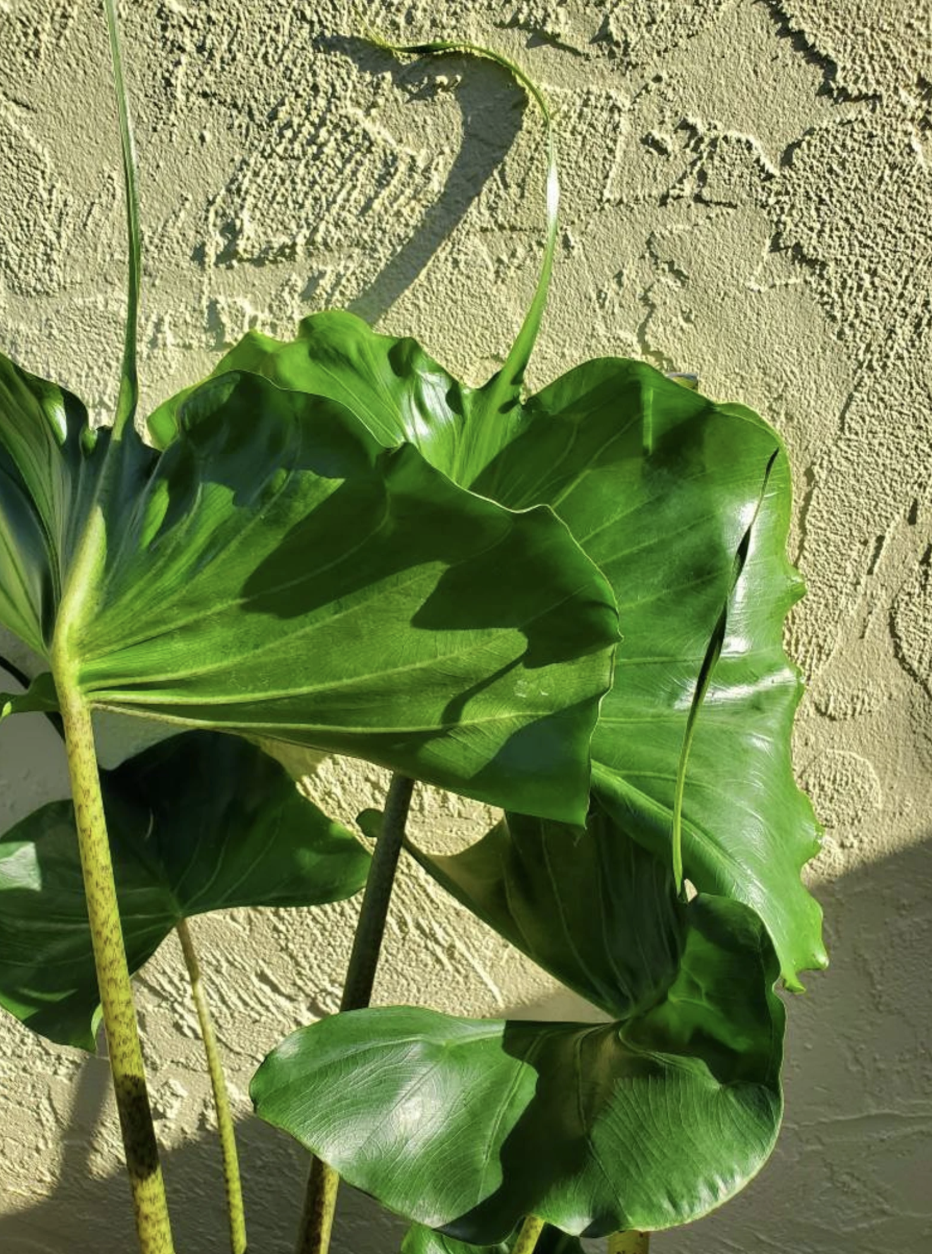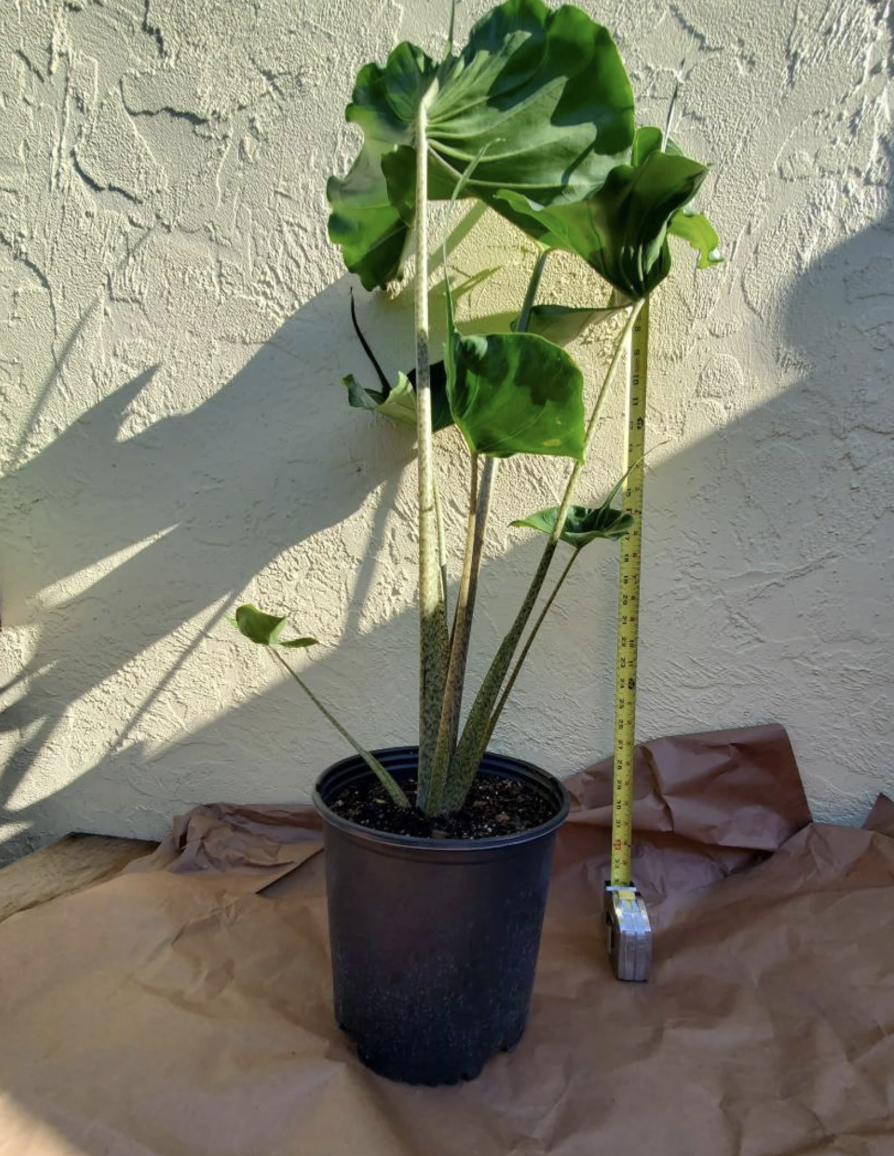 Image 1 of 4
Image 1 of 4

 Image 2 of 4
Image 2 of 4

 Image 3 of 4
Image 3 of 4

 Image 4 of 4
Image 4 of 4





Alocasia macrorrhizos var 'Stingray'
This alocasia is one of my absolute favorites! As each leaf unfurls, a stingray shaped leaf presents itself. An absolute favorite for any collection! This variety happens to have a very unique red variegation through some parts of its stem and leaves. 4” plants are planted in aquasoil with a drainage layer for easy plant keeping. Mature 10” stands tall and is planted with a nursery soil mix.
Alocasia Stingray is an exotic and rare plant that is easy to keep alive as it does not require excessive care. Although it is an easy plant, it is not a recommended plant for beginners as it is sensitive to temperature and humidity changes, however once it finds a spot it enjoys, it could thrive.
This elephant ear is becoming popular and is famous for its large leaf with a unique shape that has a long upturned tail that reminds us of a stingray. Like some other alocasias, it needs bright indirect light (south or west-facing windows are best as long as it is indirect light) and loves damp, well-drained soil mixed with organic matter as these are the characteristics of its natural habitat.
Alocasia Stingray looks similar to differentiate Alocasia Zebrina because they both have a deep green color on the leaves and a similar pattern and color on the stem.
Although their similarities, It is easy to differ Alocasia Stingray of Alocasia Zebrina by the shape of the leaves. Alocasia Stingray leaves are rounder and have a pointed finish, while Alocasia Zebrina leaves are triangular with an arrow shape.
This alocasia is one of my absolute favorites! As each leaf unfurls, a stingray shaped leaf presents itself. An absolute favorite for any collection! This variety happens to have a very unique red variegation through some parts of its stem and leaves. 4” plants are planted in aquasoil with a drainage layer for easy plant keeping. Mature 10” stands tall and is planted with a nursery soil mix.
Alocasia Stingray is an exotic and rare plant that is easy to keep alive as it does not require excessive care. Although it is an easy plant, it is not a recommended plant for beginners as it is sensitive to temperature and humidity changes, however once it finds a spot it enjoys, it could thrive.
This elephant ear is becoming popular and is famous for its large leaf with a unique shape that has a long upturned tail that reminds us of a stingray. Like some other alocasias, it needs bright indirect light (south or west-facing windows are best as long as it is indirect light) and loves damp, well-drained soil mixed with organic matter as these are the characteristics of its natural habitat.
Alocasia Stingray looks similar to differentiate Alocasia Zebrina because they both have a deep green color on the leaves and a similar pattern and color on the stem.
Although their similarities, It is easy to differ Alocasia Stingray of Alocasia Zebrina by the shape of the leaves. Alocasia Stingray leaves are rounder and have a pointed finish, while Alocasia Zebrina leaves are triangular with an arrow shape.